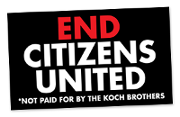Biblio
Filters: First Letter Of Last Name is M [Clear All Filters]
(2001). Business Is Combat: A Fighter Pilot's Guide to Winning in Modern Business Warfare.
"This book began with people and it ends with people, because ultimately they are an organization's greatest asset. It is individuals who innovate, not companies. It is individuals who persist against all odds, not corporate guidelines or a time clock."
(2001). Driving Digital: Microsoft and Its Customers Speak About Thriving in the E-Business Era.
"If you think about the traditional corporate structure, what determines who's going to be a part of the debate? Simple: the people who are allowed in the meeting room." (p. 78)
"Two issues: Can your senior executive group adjust to a culture in which folks at the most junior levels of the organization have access to all but the most highly sensitive information about the company? And can they adjust to a culture in which they will receive e-mails from those same junior level folks? Will they be open and responsive to those e-mails? Are the managers at levels between the junior sender and senior executive who receives the e-mail going to revolt at not being consulted before the message gets sent, probably not even cc'ed?" (p. 84)
"Two issues: Can your senior executive group adjust to a culture in which folks at the most junior levels of the organization have access to all but the most highly sensitive information about the company? And can they adjust to a culture in which they will receive e-mails from those same junior level folks? Will they be open and responsive to those e-mails? Are the managers at levels between the junior sender and senior executive who receives the e-mail going to revolt at not being consulted before the message gets sent, probably not even cc'ed?" (p. 84)
(2001). Never Wrestle with a Pig: and ninety other ideas to build your business and career.
"I've always taken some comfort in the belief that the stronger an idea is, the harder it is to steal.
That's because the best ideas, by definition, are so original and unique that they cannot survive without their creator. He or she is the only one who understands the concept fully, who can execute it up to its full potential, and who has a personal stake in keeping the concept going despite all the obstacles." (p. 92)
That's because the best ideas, by definition, are so original and unique that they cannot survive without their creator. He or she is the only one who understands the concept fully, who can execute it up to its full potential, and who has a personal stake in keeping the concept going despite all the obstacles." (p. 92)
(2001). Power talk: using language to build authority and influence.
"Surprisingly, authority can also he established by humor. The speaker who can make light of a topic demonstrates comfort in the circumstances and familiarity with the issues. The humor of the stand-up comic or the joke-of-the-week belong on late-night TV. But researchers like Robert R. Provine, professor of neurobiology and psychology at the University of Maryland, Baltimore County, who study laughter and humor in common conversation, see laughter as 'social glue,' rather than a response to something inherently funny. Laughter binds speaker and listener. Most of the time, no one is telling jokes. But within the course of a conversation, tension is reduced and connections are made with humor. This is why when the boss laughs, everybody laughs."
(2002). Java Web Services Unleashed.
(2002). XSLT Cookbook.
(2002). The Anxious Organization: Why Smart Companies Do Dumb Things.
"In organizations where anxiety is often expressed as blame, to avoid being blamed becomes a constant preoccupation. People attempt to preempt blame by sending each other memos recapitulating who did what and when. Their attention shifts from avoiding a potential problem to avoid being blamed for it." (p. 145)
(2002). Breaking Free from Stress: How to Find Peace When Life's Pressures Overwhelm You.
"People fear losing their jobs and worry about their performances. Too many leave their employment feeling drained and used up. Obviously this leaves little to give to others, particularly family." (p. 63)
(2002). The End of Work As We Know It.
"The U.S. National Institute for Occupational Safety and Health tells us that stress is becoming the biggest reason for workplace disability claims."
(2002). Primal leadership: realizing the power of emotional intelligence.
"Leaders often talk about wanting to get their people 'aligned' with their strategy. But that word suggests a mechanical image of getting all the pencils pointing in the same direction, like a magnetic field lining up the polarity of molecules. It isn't that simple. Strategies, couched as they are in the dry language of corporate goals, speak mainly to the rational brain, the neocortex. Strategic visions (and the plans that follow from them) are typically linear and limited, bypassing the elements of heart and passion essential for building commitment." (p. 208)
(2004). We Got Fired!: . . . And It's the Best Thing That Ever Happened to Us.
"If I have one piece of advice to young people, it's to break rules. Let's first assume you are delivering way more than what is expected of you. You have to do much more than the expected to compete today, because there are plenty of people out there happy to do the minimum. If you are already overdelivering, and breaking a rule will help you deliver more, then go ahead. Ask yourself a question: Will breaking a rule really help everyone out, not just myself? Is the answer yes? Then go ahead and break the rule. I'm not talking about doing anything criminal or unethical. I mean not following some stupid policy or convention. You'll have more fun and everyone will learn more. Most of all, you'll deliver more." (p. 264)
(2005). International management: cross-cultural dimensions.
"Middle management often feels threatened by lower level autonomy." (p. 132)
(2007). Action Learning.
"We thus define action learning as follows:
'An approach to working with and developing people that uses work on an actual project or problem as the way to learn. Participants work in small groups to take action to solve their problem and learn how to learn from that action. Often a learning coach works with the group in order to help the members learn how to balance their work with the learning from that work.'" (p. 3)
'An approach to working with and developing people that uses work on an actual project or problem as the way to learn. Participants work in small groups to take action to solve their problem and learn how to learn from that action. Often a learning coach works with the group in order to help the members learn how to balance their work with the learning from that work.'" (p. 3)
(2007). The New American Workplace.
"In particular, there was growing evidence that if unnecessary job stress could be reduced, workers would suffer fewer heart attacks and strokes.... Moreover, a growing body of data suggested that many mental health problems have their genesis at work, and excessive drug and alcohol use are linked with certain occupations and conditions of employment." (p. 103)
(C)2014 CC-BY-NC 3.0, workcreatively.org











 ]
]